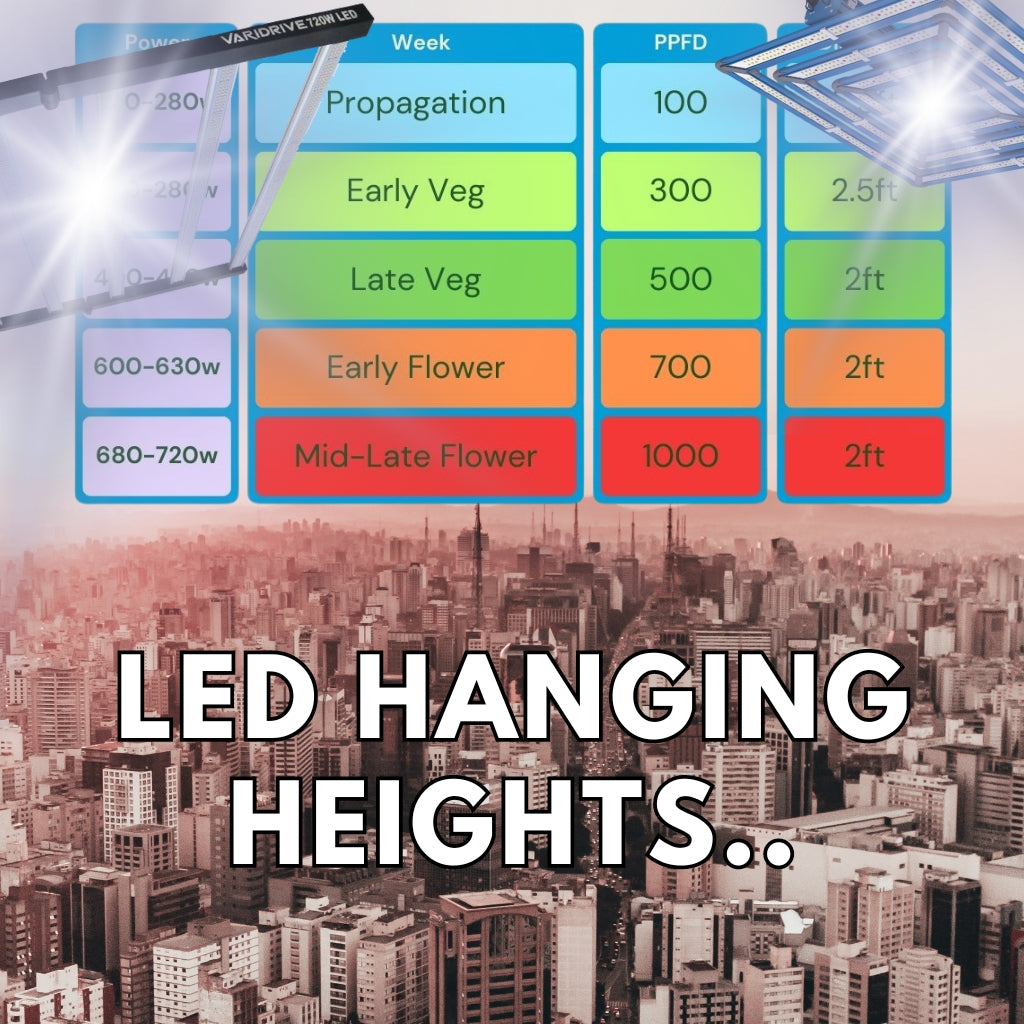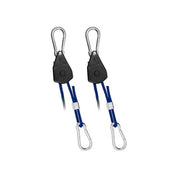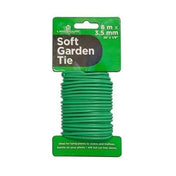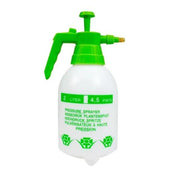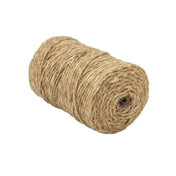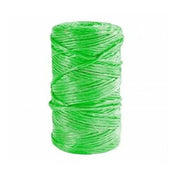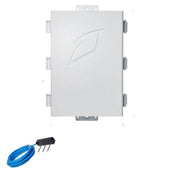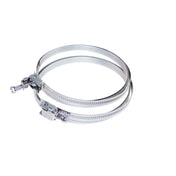LED Dimming & Hanging Guide
Getting the ideal light levels for your particular plant at a particular stage is something that will take some time and experience to master. Even with years of HID experience, switching to LED and achieving perfect light balance first time is a tall order. With a little help from us, you can hit the ground running.
In terms of real numbers (PPFD – sometimes referred to as ‘umols’), plants should be getting around 100 for new seeds and rooting cuttings, up to 300-500 for veg and up to 700-1000 for flower; this will however, vary, depending on a variety of factors. It’s always best to go cautiously and slowly build up to these figures, to avoid coming in too bright, too fast and stressing your plants. Keep an eye on your plants for the first few days after increasing brightness; if your plants start to look unhappy then it’s a sure sign that you’ve gone too far.

We can assume that most growers don’t own a Quantum Sensor, so we’ve created a guide based on our own sensor readings that you can follow.
The following PPFD readings were taken centrally under a single fixture in an open room without reflective walls. Both lights tested here are among the most popular fixtures on the market today. The Maxibright 300w Pro is an extremely popular, high-performing and adaptable LED grow light and is used for both veg and flower. Examples of the 680-720w fixtures include: Omega Black, Maxibright Varidrive, LUMii Black, Adjusta-watt Retro and Nokatech SimpleX. Take a look at our guide below!

A note on environment
Ensuring that your environment is first correct is fundamental to achieving effective growth, with lighting considerations always going hand-in-hand with this. If your plants aren’t adequately cared for then even the best light with the best spectrum isn’t going to perform very well.
A common mistake that new LED users make is to simply swap it with their old light without considering the impact to their growing environment that this change will have. Because LEDs are so much more efficient than their HID counterparts, far less radiant infrared heat is thrown down on to canopies, significantly lowering temperatures and raising relative humidity levels alongside, slowing transpiration, plant metabolism and reducing photosynthetic capacity (known as ‘light saturation point’).
This problem can then be compounded further by the extra light that LEDs emit versus the grower's previous light. In situations like this, plants will quickly start to look unhappy show signs of hunger and deficiency. If your plants are growing happily and enjoying the light being provided, new growth will be a lush green colour and upper leaves will be partially upright - deliberately facing the light (sometimes referred to as 'praying'). Only once it's clear that your plants are enjoying the light should you consider increasing it.
When it comes to the LED grow lights of today, it’s much easier to harm a plant with too much light than not enough. “More light equals more growth” is true but only up to a point and will depend on everything else being perfect, beyond which (around 1000 PPFD, unless using CO2) you'll see diminishing returns on yield.

